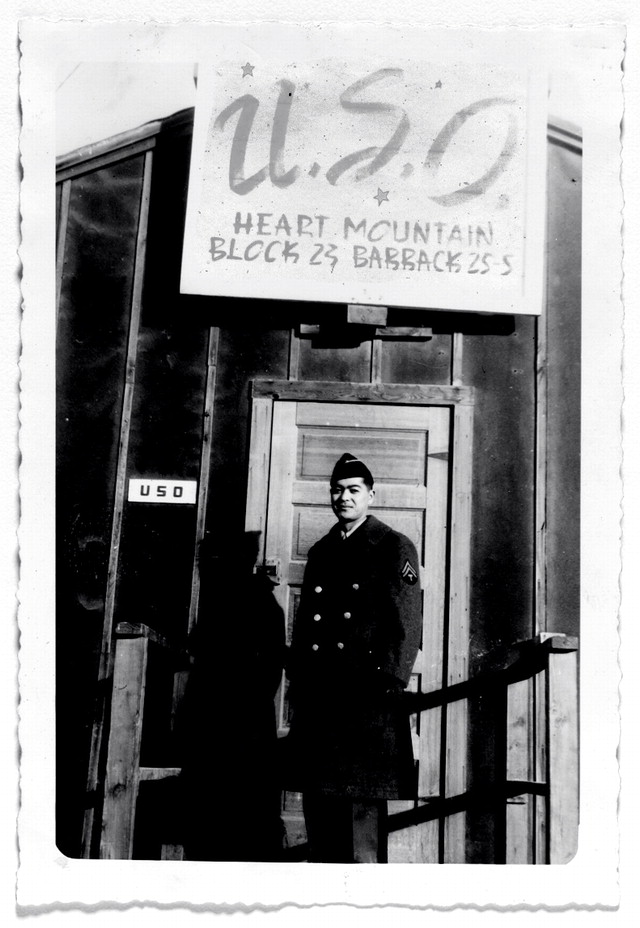The following is a republication of a post by Andrew Huber, liaison specialist for the Veterans History Project. It was first published on the Library’s “Folklife Today” blog.
Warren Tsuneishi at the Heart Mountain Relocation Center in Wyoming, one of the internment camps where Japanese-Americans were detained during World War II.
Throughout the month of May, we celebrate Asian-American and Pacific-Islander heritage and remember the contributions made by people of Asian-Pacific descent. Those contributions are numerous, from Duke Kahanamoku, who brought the sport of surfing into the mainstream, to Steven Chu, who earned the Nobel Prize in physics for pioneering methods in supercooling atoms. However, the contributions to our nation that required the most courage, dedication and sacrifice were undoubtedly those of veterans.
Perhaps the most notable and selfless examples from this group are the Nisei veterans of World War II— American-born citizens of Japanese ancestry. Along with their parents, children, aunts and uncles, they were rounded up by their own U.S. government, forcibly removed from their homes and placed in internment camps. After these grave injustices, nobody could have blamed Japanese-Americans for turning their backs on the country that betrayed them. Instead, thousands of Nisei volunteered to go to war.
One such volunteer was Warren Tsuneishi. He was living in Monrovia, California, when Executive Order 9066 forced his family to relocate to the Heart Mountain War Relocation Center in Wyoming. He received a special dispensation to leave the camp and get his college degree from Syracuse University. After finishing his senior year early, he volunteered for the Army and enrolled in the Military Intelligence Service Language School—the only option offered to him as a Japanese-American except for the 442nd Regimental Combat Team, composed entirely of Americans of Japanese ancestry.

Warren Tsuneishi (left) in the Philippines during World War II.
After six months of schooling, he deployed to the Pacific Theater to translate captured Japanese documents and interrogate prisoners. One of the documents his team captured and translated happened to be the Japanese military’s defense plan for the island of Okinawa. It revealed an unconventional strategy that involved allowing the Americans to advance to the heart of the island, where the Japanese had concentrated their forces in fortified positions. Once the Americans were engaged, kamikaze planes were to destroy the supply ships off the coast, cutting off the American infantry from resupply and reinforcement. The battles on Okinawa were still hard-fought and bloody, but the Allies were able to avoid this trap, and countless American lives were saved, because of Tsuneishi’s translation and interpretation of the captured documents.
To learn more about Asian Americans in the U.S. military, visit our “Experiencing War” web feature Asian Pacific Americans: Going for Broke.

















